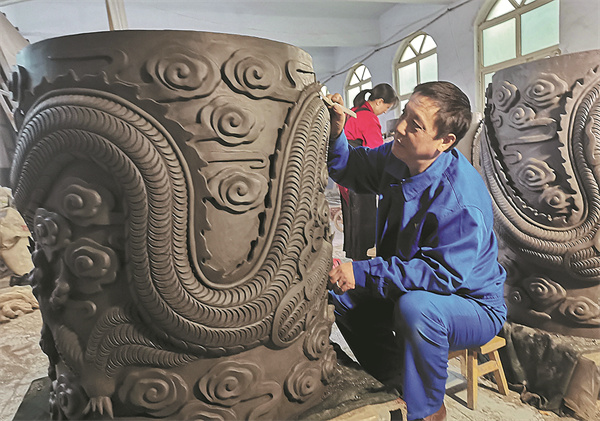

Chen Wanli, a noted ceramic expert, once said the Qiao family was undoubtedly an important school in the history of Shanxi's glaze craft sector. There is clearly a family influence demonstrated in the works unearthed, according to Chen.
Architectural glazed tiles were used to decorate imperial palaces in China as far back in history as the Northern Wei Dynasty (386-534). However, it wasn't until the Ming and Qing (1644-1911) dynasties that the use of architectural glazed tiles became more widespread and enjoyed its peak period. It was common to find tiles modeled after auspicious beasts and creatures decorating ridges and eaves, showing off the prominence and scale of the building.
For Cui Shulin, the 77-year-old inheritor of the Qiao family craft, the technique hasn't changed in more than 1,600 years and has been revived in Yangcheng, creating employment opportunities in the local community.
In the county, there are 32 factories producing glazed ceramic tiles and sculptures with an annual production value reaching 560 million yuan ($83 million) last year, according to Shi Guoping, head of the Yangcheng County Building Ceramic Association. In 2008, the craft was recognized as a national cultural heritage.